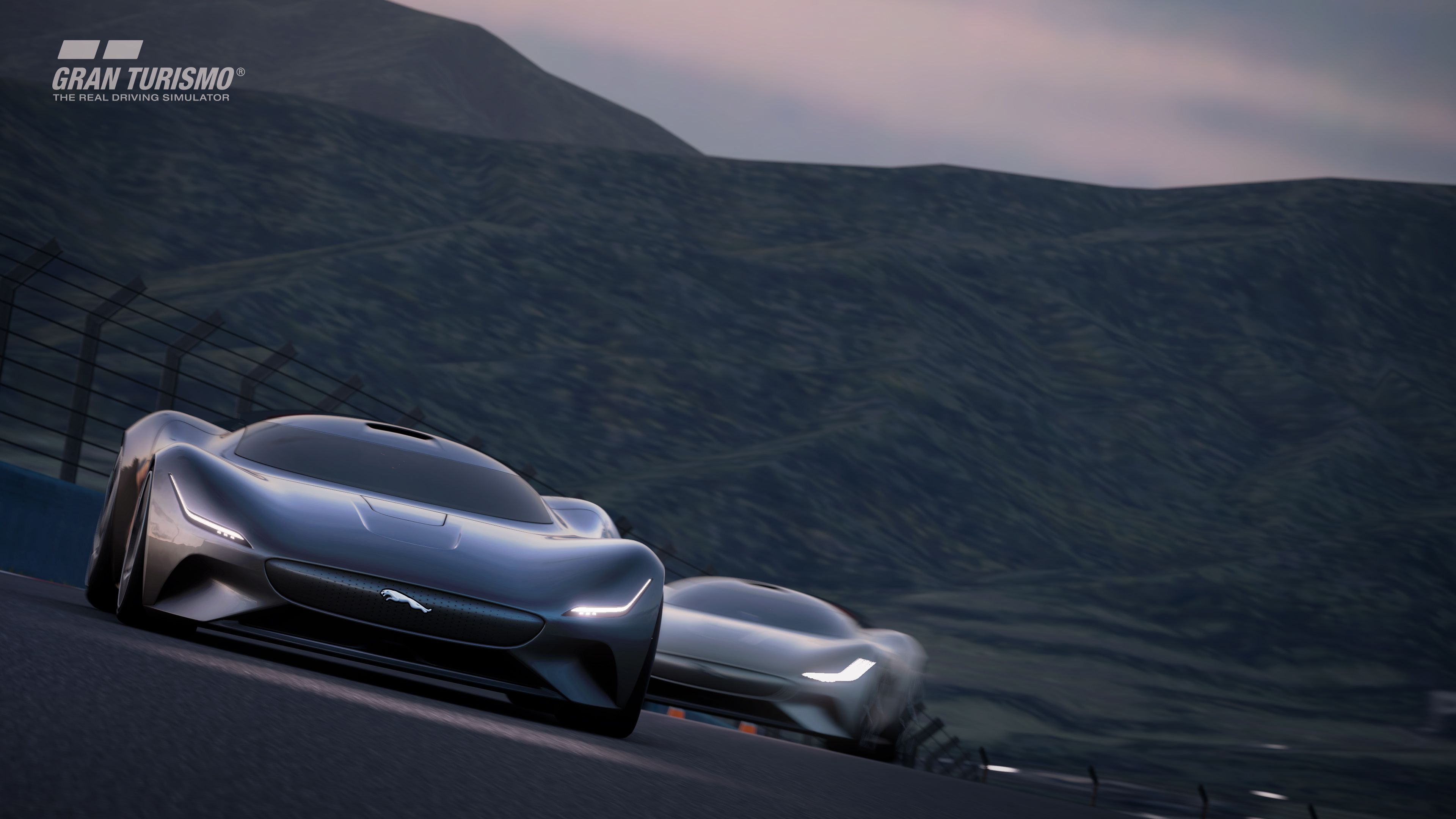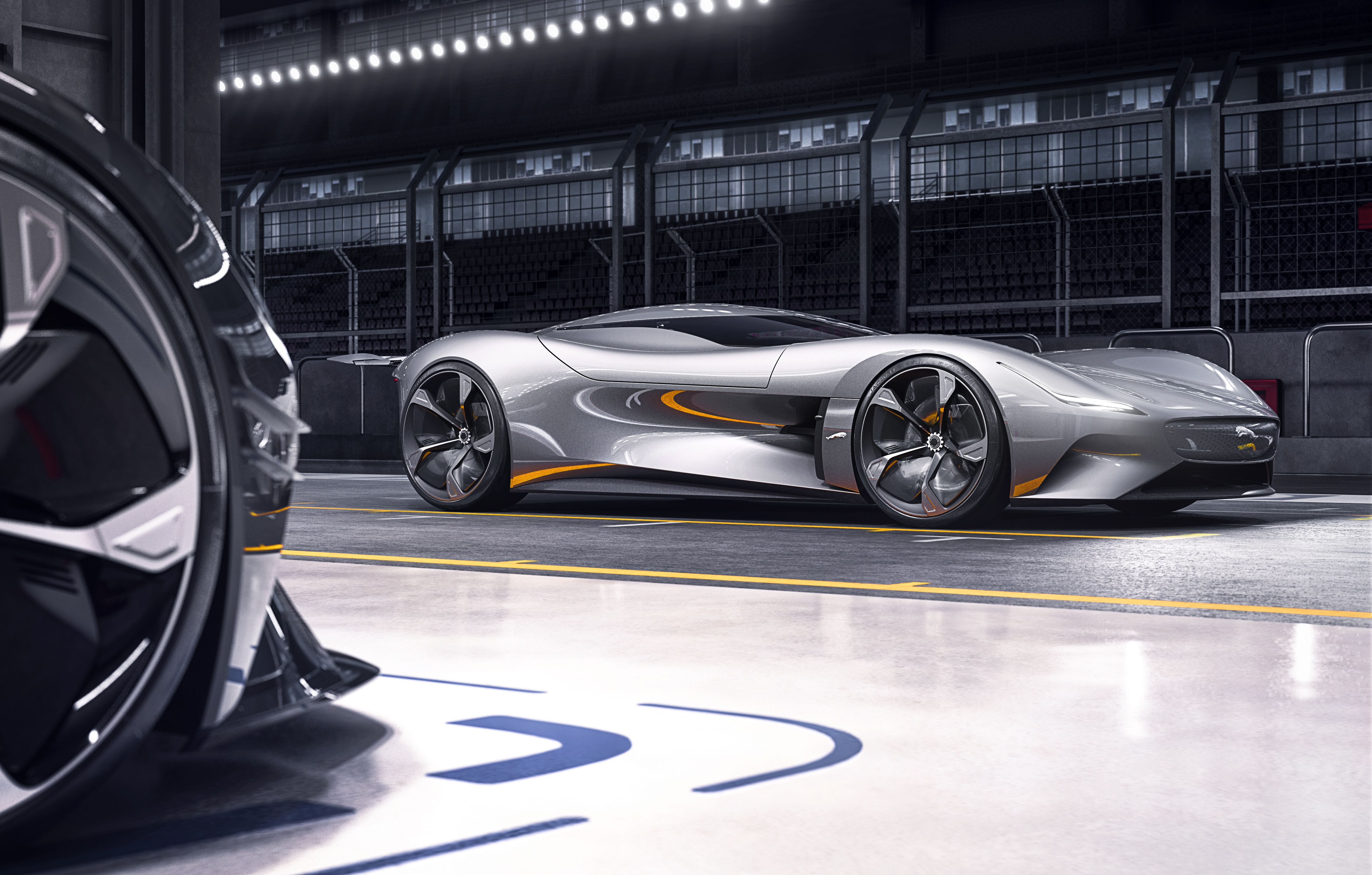It's been 25 years since Jaguar discontinued its last supercar, the great XJ220 amid poor sales at a time when people really weren't eager to buy $1 million mid-engined monsters. Nowadays, there are more millionaires than ever in the world and Jaguar, while focusing on expanding its EV lineup, could be planning a shock return to the world of high-performance supercars with something inspired by the jaw-dropping and all-electric Vision Gran Turismo presented late last month. This may well become the halo car for a new era of the Leaping Cat.
We know the world wants more than just an F-Type replacement from Jaguar
We're always told to dream big and aim for the stars.
This status quo, frustrating for Jaguar fans of old that remember the company's unassailable link with the world of motorsports, may, however, change if Jaguar will get to the drawing board and create a supercar. As a matter of fact, the Britons have done just that and the end result is a voluptuous grand tourer that you can drive yourself. No, we're not suggesting you can drive if after plotting a successful bank heist because this latest supercar from Birmingham was created to be enjoyed in the virtual premises of Gran Turismo.
Enter the Jaguar Vision Gran Turismo Coupe
Called the Jaguar Vision Gran Turismo Coupe, it joins a fleet of other awe-inspiring cars made by prominent automakers for use in the successful Playstation sim racing game. The car isn't, though, as extreme as the McLaren Ultimate Vision Gran Turismo Audi's e-Tron Vision Gran Turismo, the Hyundai N 2025 Vision Gran Turismo or the Peugeot L 750R Vision Gran Turismo. Instead, it looks like something that could actually preview a running and driving production model, a bit like Mercedes' Vision GT from 2013.
This got us thinking. Could Jaguar be telling us something between the lines with the reveal of this swooping two-door, two-seater road bullet?
The positioning of the three electric motors, one on the front axle and two in the back, allows for a nearly 50:50 weight balance and, with so much oomph, a top speed in excess of 200 mph is possible. All these numbers are impressive and, given the fast-paced development of electric technology, aren't confined to the world of video games. The Pininfarina Battista with its 120-kWh Rimac-sourced battery, trumps the Jaguar Vision GT Coupe with a total output of 1,877 horsepower and 1,696 pound-feet of torque from four electric motors. The top speed of the Battista is said to be 217 mph and 0-60 mph should take about two seconds flat. In other words, it's all possible.
An XJ220 Successor Doesn't Sound Completely Feasible, but It Worked for Lexus with the LF-A
We think it'd be a great way for Jaguar to firmly step in the EV age with a bang, a car that will endure across generations just like the XJ220 or the D-Type have before it. You could argue that, in today's topsy-turvy economic landscape, Jaguar Land Rover can't afford to fund such a project but, then again, this is the sort of car that comes along once in a generation for a brand, a car that can then be referred to whenever needed to boost brand image. Lexus pulled out all of Toyota's stops to make the LF-A a tangible reality and, even though it's been almost nine years since it was released, the Japanese still think there's no need for another Lexus halo car - that's how strongly the LF-A impacted the public image of a company previously considered to be boring and unimaginative.
The Jaguar C-X75 Was Jag's Way of Teasing an XJ220 Successor
Let's not forget that Jaguar toyed with the idea of building an XJ220 successor in the real world quite recently with the eye-catching C-X75.
Touted as "the world's fastest test-bed for the world's most advanced technologies," the C-X75 was the first Jag underpinned by a carbon fiber composite monocoque. Power came from a Formula 1-inspired, 1.6-liter, dual-boosted (turbocharged and supercharged) four-cylinder that put out 502 horsepower at an ear-splitting 10,000 rpm. A further 390 horsepower is delivered virtue of a pair of electric motors fed by a 19-kWh lithium-ion battery, the highest continuously rated power PHEV pack at the time with up to 300 kW of power. Combined torque was rated at 738 pound-feet.
The 1.6-liter mill was chosen because, as C-X75 Program Director Rob Atkin pointed out, Jaguar wanted the C-X75 to not only accelerate as fast as a Veyron, but also to match the CO2 emissions of a Prius and be able to drive as many miles in full EV mode as a Chevy Volt, namely 38 miles. With the carbon monocoque in place (development prototypes featured aluminum body panels), the whole thing tipped the scales at just under 3,750 pounds or about as much as a standard Porsche 918 Spyder. 0-60 mph is done in 3.0 seconds (six seconds in full EV mode) and 0-100 mph in under six seconds (a Veyron needed about 5.2 seconds to complete the feat). Top speed was said to be in excess of 200 mph.
But it never happened.
Jaguar Could Team Up With Aston Martin to Build an XJ220 Successor
So, looking at the stillborn C-X75, it may be wiser to think that Jaguar may bring to the market a swansong for the ICE, a car that channels all of the great Leaping Cats that came before it as a goodbye to the loud gas-guzzlers. While we were entertaining this second scenario, we reckoned Jaguar could try and rekindle its relationship with Aston Martin that was seen merely eight years ago as vital for the long-term success of both brands, especially Aston Martin.
Since then, however, Aston Martin proved it could keep its head above the water well enough on its own, under the guidance of Andy Palmer. It is now a key partner of Formula 1 outfit Red Bull Racing and, utilizing its extensive expertise and its genius designer Adrian Newey, it set out to build one of the world's most dazzling hypercars in the Valkyrie.
Why the Aston Martin Valkyrie Would Be a Good Fit as a Base for an XJ220 Sucessor
For those living under a rock, the Valkyrie is Aston Martin's crown jewel, the most outlandish product of the company based in Gaydon, England.
Aston Martin will only build 150 Valkyries as well as 25 Valkyrie AMR Pro track weapons that should top out at 225 mph, reach 60 mph from a standing start in under 2.5 seconds and obliterate most lap records. With the standard Valkyrie's $3.2 million price tag, it's hard to believe that a Jaguar-badged derivative could be much cheaper.
The Aston Martin Valhalla Would Probably Be a Better Fit as the Basis for an XJ220 Successor
We think a more realistic option in case of a Jaguar-Aston Martin collaboration would be the Valhalla, formerly known as the Aston Martin RB-003. Also conceived by Adrian Newey and the rest of the brains at Red Bull Racing, the Valhalla is the baby brother of the Valkyrie and we think that this car could be the base of a future Jaguar supercar co-engineered with Aston Martin. For the record, the Valhalla is said to start from $1.3 million and will weigh under 3,000 pounds thanks to extensive use of carbon fiber.
A V-6 engine combined with a hybrid system will power the car that's said to be made in just 500 copies. With a state-of-the-art oil system that allows the fluid to be drained in less than 90 seconds, the Valhalla is bound to take the mid-engined establishment by storm but we reckon that its Jaguar brother will be a more laid-back car or, in other words, not quite as poised in order for the two to not compete head-to-head performance-wise so that they don't undermine one another on the market.
The Jaguar XJ220 Didn't Meet All Expectations, and Jaguar May Be Hesitant to Revisit the Supercar Realm
What's certain is that the game's moved on a lot since Jaguar became the maker of the fastest production car for a little while with the XJ220. That sleek machine supposedly capable of a top speed of 220 mph (hence the name), was massively successful at the time of its unveiling in 1988 with over 1,000 people interested in buying it despite the obscene $1 million MSRP (adjusted for inflation).
Jaguar - and all of us - remember, though, that interest scuttered by the time the XJ220 entered production due to the economic crisis of the early '90s.
Racing, though, was a big part of Jaguar at the time when the XJR-15 and the XJ220 were designed, built, and received the 'go' sign from the board of directors. Nowadays, and due to the failure of these past projects, we'd think Jaguar would be a lot more hesitant to allow itself to pour money into a halo car. The financial situation wasn't looking too good seven years ago when the C-X75 program was stopped and, by and large, not much has changed since although we will always hope that Jaguar gets back to doing what it does best: building hellishly fast race-bred road cars!


